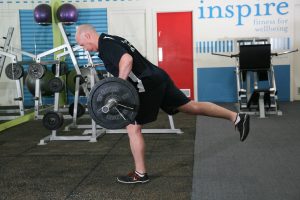Written by: Sebastian Mann Bach. Exercise and Sport Science (current)
Many people who attend a gym are unsure about how and what they should be REALLY doing. The result is they are inefficient with the time they spend training: and sadly, DON’T ever achieve their goals! If you are like most people, you go the gym and lift a few weights, spend some time running on the treadmill (or bike!) and then leave. You don’t have a structure to your exercise routine. Having worked with thousands of clients over 20 years as an Exercise Physiologists I have noticed a growing trend in individuals training patterns. Many people are starting to be led by the latest training trends on social media (which often are) coming from individuals with little qualifications.
Knowing how to exercise right is vital to achieving your goals. Whether under the supervision of a personal trainer or having a program designed by an Exercise Physiologist; exercise programs should be individually tailored following a number of sport science principles. There are many training variables you should include in your exercise program to maximize your results and the investment of your time spent training. Here is an overview of five training principles you should include into the planning of your training program. Training intensity, frequency, volume, progressive overload and specificity to meet your goals.

Training Principles Outlined
Training Intensity
Firstly, training intensity is completely dependent on your goals; many people believe that a higher intensity means they should be “moving quicker”. This is not the case. Example: many people believe that Strength is the same thing as Power as they both require high intensity maximal efforts. In sport, the term “Strength” is defined as the ability to carry out work against an opposing resistance whilst “Power” is defined as the ability to exert a maximal force within the shortest time possible. For example, if we take a look at Usain Bolt; he has exceptional lower body muscular power however; he wouldn’t be able to throw 200+ kg over his head like Olympic lifters. Likewise Olympic weight lifters couldn’t run a 100m sprint in 9.58 seconds. What these types of athletes do have in common though is they both train and compete at high “training intensity” efforts. However it is their training volume and specificity that are different.
Training Volume
Volume is the total amount of work performed within a session e.g. total number of sets and repetitions performed during a weight training session. Training volume is strongly related to training frequency and intensity as they both change simultaneously depending on training goals. When your training intensity increases, you will need to reduce the volume. For example if you were to change your program to consist of more strength training (high intensity) rather than endurance training (lower intensity) your volume would need to decrease to allow for the higher intensity efforts.
Frequency
Frequency involves the number of training sessions done over a consistent period e.g. each week. After each training session the body must adapt and recover so that it is ready to work during the next session. Training at the right frequency is important to ensure progression occurs after each session.
Progressive Overload
Progressive overload involves the progression of load and exercises so that adaptations can occur, however overloading too fast will increase your susceptibility to injury.

Training Specificity
Training Specificity involves the idea that training needs to be relevant to the desired goals or outcomes of the individual. This principle is concerned with everything that is mentioned above. For example in order to follow the principle of training specificity, if the goal was to improve your upper body muscular power or strength, it would be inefficient to go and train muscles concerning the lower body through an aerobic training session(running, swimming etc). The muscle groups, number of sets and repetitions, volume of training as well as frequency must all be modified so that they are specific towards an individual’s goals. Training specificity is as critical for a sporting athlete as it is a member of the general population. Simple put; the way we train our body relates directly to how our body is conditioned to perform activity.
A great example of this is the abundance of machine weight exercise machines in many gyms and rehabilitation centres. As these machines are vastly different to the 3 dimensional planes of movement we move and work our body in real life; they don’t adhere to this training principle of specificity.
If you’re looking for the optimal exercise program for your own personal goals, we highly recommended you seek help from an expert exercise professional. An Accredited Exercise Physiologist, Sport Scientist or a tertiary qualified personal trainer would be the right start.
